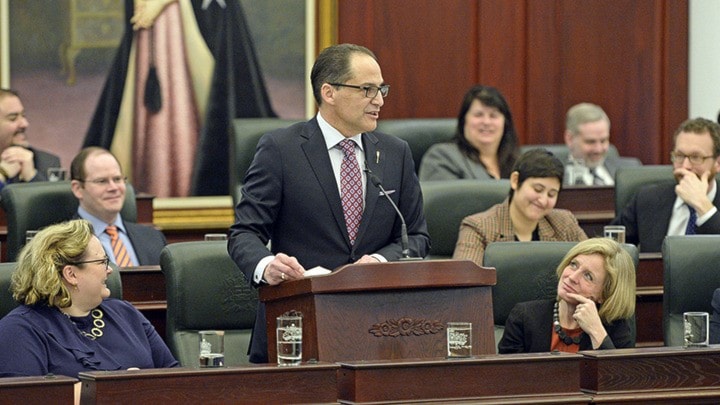For both local municipalities, last week’s provincial budget left them wanting more.
Town of Ponoka Mayor Rick Bonnett and Ponoka County Reeve Paul McLauchlin welcomed the news that the provincial NDP government extended the funding for the Municipal Sustainability Initiative (MSI), which had been due to end.
For the county, it had expected an MSI contribution of $3 million and received almost $172,000 more than anticipated. As well, five highway paving upgrade projects will be completed in the county this summer. That includes a three kilometre stretch of Secondary Highway 815, two kms of Secondary Highway 795, Highway 53 between Highway 2 and 2A plus a major upgrade of the Highway 2A and Township Road 424 intersection.
McLauchlin noted this is a spending budget and he is wondering how long before things fall to earth.
“Although we obviously appreciate the funding provided, we would be remiss to believe that the other shoe will not drop eventually,” he stated.
“This budget emphasizes a need for prudence. Now remember, Ponoka County has one of the lowest taxes in Alberta, lowest staffing per capita and has no debt. If the province was run with the same fiscal responsibility as Ponoka County, we would be in a much different place than we are now.”
He added many years ago, the county council of the day pushed to no longer rely on the province to help drive its operations and services.
“That is why we are where we are today; on the shoulders of fiscally conservative giants. If the province turned off the MSI tap, we would provide the same service and staffing levels as we do currently just no pavement and no donations,” he stated.
Education worries
Meanwhile, Bonnett was pleased, though somewhat disappointed in the small $15,000 increase in the town’s MSI funding.
“The government kept the MSI capital portion at the current levels and provided the town with an increase on the operating side, it was a surprise that they extended the program we thought was coming to an end,” he stated.
“Though, we did think that increase should have been closer to $40,000 considering the rise in our population, if the government had maintained the way it was calculated previously.”
Where Bonnett felt let down was in the lack of a long-term stable funding model for municipalities, especially given the fact the province wants towns to come up with five-year and 10-year plans for operations and capital spending respectively.
“The province is also talking out of both sides of its mouth. They want five-year operation and 10-year capital spending plans, but it’s hard to do that when municipalities don’t have solid funding from year to year. It really makes it difficult to plan for the future if you aren’t sure what money you’ll have.”
One other issue Bonnett had with the budget is what the education portion of the town’s property taxes will be. He stated that the province has assured municipalities it isn’t increasing, but wondered if the $50 million reduction in student fees will be recouped through the requisition.
“That’s my fear, that the money will be taken out of municipalities to make up for that cut. We won’t know for sure until the government lets us know what that figure is, but I can’t see where else it would come from because the government didn’t cut jobs or anything else,” he said.
